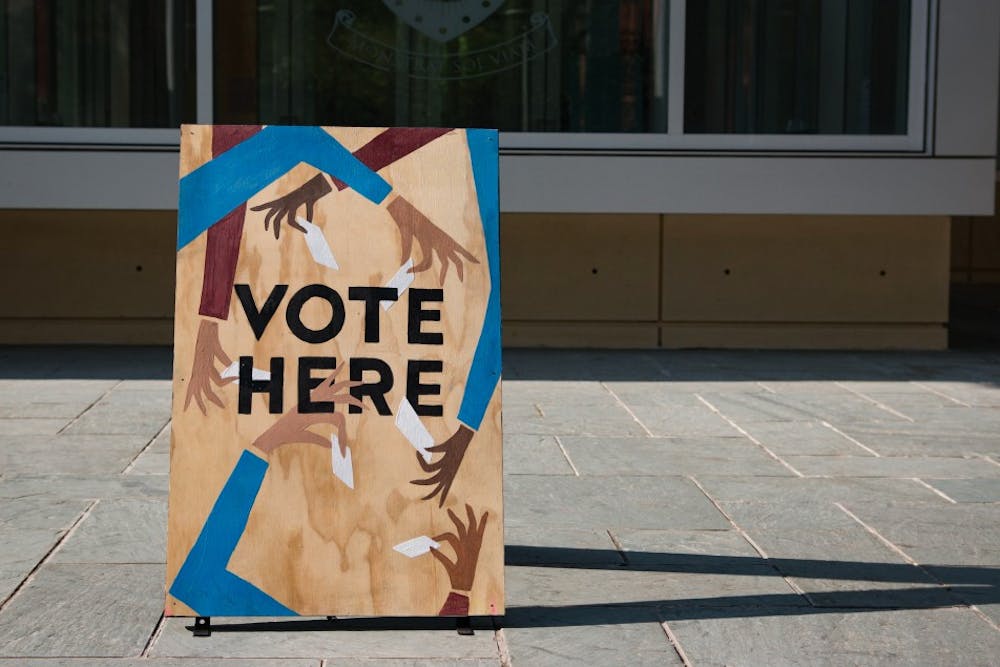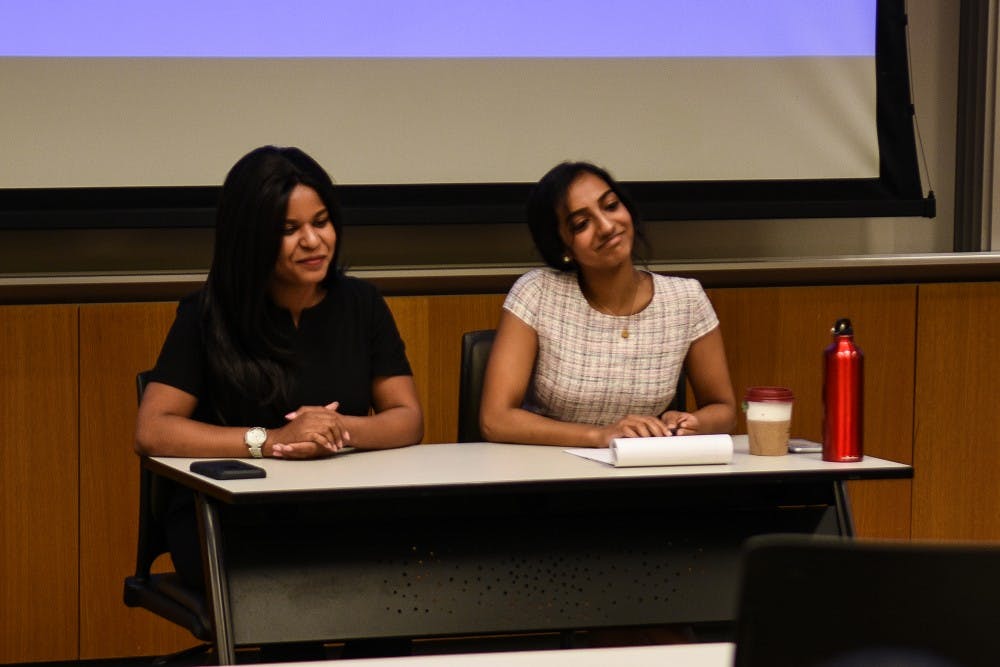
The Nominations and Elections Committee expanded their voting booth initiative to try to offset potential low voter turnout. (File Photo)
Following new initiatives established during the Undergraduate Assembly and Class Board elections, the voter turnout for this year's election remained constant.
The Nominations and Elections Committee implemented a variety of new initiatives this past election cycle, limiting the ways candidates could campaign for votes while also adding voting stations and voter incentives. In the face of the changes, turnout decreased slightly from previous years, hovering at around fifty percent of Penn's undergraduate student population, NEC Vice Chair for Elections and College sophomore Kiley Marron said.
On April 4, College junior Natasha Menon and College junior Brian Goldstein were voted in as the next president and vice president of the UA, respectively. There were nearly 80 candidates who ran for UA and Class Board elections this year, an increase from the typical number of candidates, usually in the mid-60s, Marron said.
Marron said that the NEC does not publicly release exact turnout figures, instead offering the rough number of fifty percent of Penn undergraduates who voted for either UA or Class Board.
"We never release the official figures, but the NEC does study them and we share them for our own internal analyses with the rest of our body," Marron said.
This election cycle was the first affected by an amendment to the NEC’s Fair Practices Code in February which banned candidates from approaching potential voters with laptops. To address the possibility of low voter turnout, the NEC set up more tables with laptops around campus for students to vote. The NEC also collaborated with local businesses, including Kiwi, Ben & Jerry’s, and HipCityVeg to offer promotions to students who showed the cashier their completed ballot.
Marron said that the change in policy was crucial to ensure a “free, fair, and unbiased election,” since it reduced the ability of candidates to pressure voters — a practice that is banned in the FPC.
Although Marron said this was a successful project, the introduction of two-step verification complicated voting, since students had to sign in with their Penn Key to vote which lengthened the process.

UA President Natasha Menon (right) and Maria Curry engaged in two debates during the student elections process.
While the voter turnout remained the same as the previous years, the majority of the Engineering representative seats are unfilled.
There were no formally declared candidates for the five Engineering representative seats on the Undergraduate Assembly. Engineering freshman Kshitiz Garg was the only student to run a successful write-in campaign, winning a seat with 98 votes. The NEC will likely hold a special election to fill the four vacant Engineering representative seats in the fall semester, Marron said. The election will coincide with the incoming Class of 2023’s freshman elections.
Marron said that the election cycle was smooth overall, citing no recorded FPC violations and praising the quantity of well-qualified candidates.
The election cycle was also notable for a tied result for the fifth Wharton representative seat on the UA — which Marron said was rare. Wharton freshman Danny Dontoh and Wharton sophomore John Casey both received 197 votes, tying for fifth place behind College and Wharton junior Maria Curry and Wharton freshmen Nikhil Gupta, Janice Owusu, and Dante Diggs.
The tie result would have resulted in a runoff election, Marron said, but Dontoh offered to let Casey take the seat, resulting in Casey formally winning the election.
The Daily Pennsylvanian is an independent, student-run newspaper. Please consider making a donation to support the coverage that shapes the University. Your generosity ensures a future of strong journalism at Penn.
Donate




